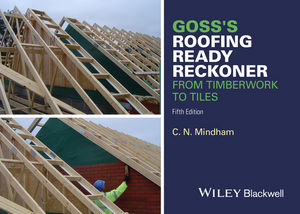Three Tools You Need to Start Installing Metal Panel Roofing

In the U.S., metal roofing is one of the fastest growing segments in the roofing industry. With an ever-growing palette of designs mirroring classic roofing materials, metal roofing has nearly doubled its market share expansion in reroof applications in the past three years (8 percent in 2014 to 14 percent in 2017).
Valued for its strength, longevity and lower insurance costs, metal is quickly becoming a go-to solution for the long-term roofing needs of homeowners, with many willing pay a little more for the peace of mind it provides.
There are lots of reasons homeowners are getting hip to metal. The versatility of metal allows customers to achieve the look of Spanish-style barrel tile, classic cedar shake and chiseled slate with better wind, impact and algae resistance, stronger warranties and more cool roof color options.
While metal roofing can add an exciting new income stream to a roofing company’s business, many contractors remain on the fence about metal roofing. Some look at the heavy machinery, training and upfront costs associated with standing seam metal roofing (the kind often found on farmhouses) and assume all metal roofing is cost-prohibitive.
Today’s metal panel roofing systems function and install much like asphalt shingles, with a few adjustments in underlayments, application techniques and tools. Many installers are surprised to know that with a roughly $200 investment in tools and a little additional instruction, they can add metal panel roofing as a new feather in the cap of their business.
The primary tools needed to install an asphalt shingle roof are pretty basic. Aside from the necessary safety and harness equipment, a hammer, impact driver and utility knife will do the lion’s share of the work. The primary tools for putting on a metal panel roof are different, but also pretty basic. The three main tools you’ll need to tackle a metal panel roof can easily be found at most hardware stores.
What you’ll need:
- Metal Snips (retail price – $10-15 a pair) – Metal cutting (aviation) snips replace the utility knife that would typically be used to cut asphalt shingles. Metal snips are the primary tool you use to separate the metal panels and cut them to the right length. Using snips requires more deliberate action than running a utility knife down a length of shingles, but one can argue that the motion is safer and more accurate. This lightweight tool will easily fit into your utility belt.
- Impact Driver – (retail price - $100-$300) – An impact driver uses both rotation and concussive force to drive fasteners through the thickest, densest materials. It’s almost like having a drill and a high-powered ratchet in one device, delivering two-to-three times more torque than a standard screw driver. You’ll need this raw power to secure the metal panels to the roof sheathing.
- Hand Seamer (retail price - $30-$60) – A hand seamer is what you’ll need to make accurate, clean angle bends in sheet metal. This is crucial around hips and ridges to make sure the individual metal panels are flush with one another. Most hand seamers are designed with a smooth finish, as not to scratch metal surfaces. It is a strong and versatile tool, making it great for many kinds of metal detailing work.
Today’s advances in metal roofing offer customers a wide variety of colors and architectural styles that don’t require heavy equipment to install. Some roofing manufacturers offer education-based credentialing programs for companies that are serious about metal roofing.
For more information about metal roofing products and installation methods, visit www.matterhornmetalroofing.com.
Looking for a reprint of this article?
From high-res PDFs to custom plaques, order your copy today!









